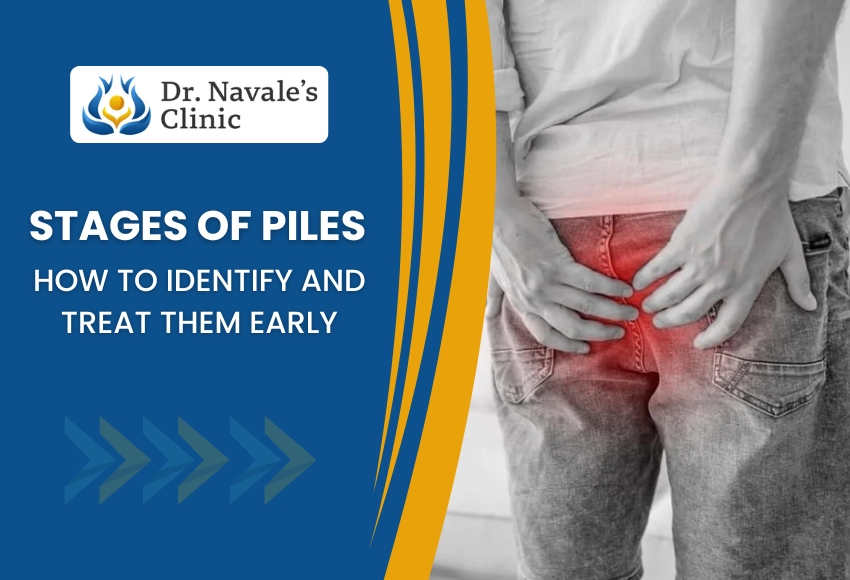
Stages of Piles: How to Identify and Treat Them Early
Piles, medically known as hemorrhoids, are a common yet often misunderstood condition affecting millions. They are essentially swollen veins in the lower rectum and anus. Many people suffer in silence, but understanding the stages of piles is the first step toward effective treatment and relief. Early identification can prevent complications and lead to simpler, less invasive solutions.
This guide will walk you through the four main stages of piles, their symptoms, and the treatment options available at each step.
The Four Stages of Piles Explained
Piles are generally classified into four grades, which help doctors determine the most appropriate treatment.
Grade 1: The Early Stage
In this initial stage, hemorrhoids are internal and do not prolapse (protrude) outside the anal canal. You might not see them, but you can experience symptoms.
- Symptoms: Minor bleeding (bright red blood on toilet paper or in the stool), occasional itching, or discomfort.
- Treatment: This is the easiest stage to manage. Treatments focus on lifestyle changes, including increasing fiber and water intake, using over-the-counter ointments, and avoiding straining during bowel movements.
Grade 2: The Prolapsing Stage
The hemorrhoids prolapse or push out during a bowel movement but retract back inside on their own afterward.
- Symptoms: All Grade 1 symptoms, plus a feeling of a lump or fullness during bowel movements that later disappears.
- Treatment: Along with lifestyle modifications, non-surgical procedures like Rubber Band Ligation are highly effective. This painless procedure cuts off the blood supply to the hemorrhoid, causing it to shrink and fall off within a week.
Grade 3: The Prolapsed Hemorrhoid Stage
At this stage, the hemorrhoids prolapse during a bowel movement or even spontaneously, but they do not retract on their own. They require manual pushing to be placed back inside the anal canal.
- Symptoms: A persistent prolapsed lump that you can feel, increased discomfort, bleeding, and mucus discharge.
- Treatment: While manual reduction is possible, medical intervention is strongly recommended. Procedures like Infrared Coagulation or Sclerotherapy are common. Surgery might be considered if these are ineffective.
Grade 4: The Advanced Stage
This is the most severe stage, where the prolapsed hemorrhoids cannot be pushed back inside. They are permanently outside the anal canal.
- Symptoms: Constant pain, severe discomfort while sitting or walking, significant bleeding, and a high risk of strangulation (where blood supply is cut off), which is a medical emergency.
- Treatment: At this advanced stage, surgical intervention is almost always necessary. Modern techniques like Laser Surgery for Piles (LHP) or Stapled Hemorrhoidopexy offer minimal pain, quick recovery, and excellent long-term results compared to traditional open surgery.
Why Early Detection is Crucial
Ignoring the early signs of piles can lead to a progression through the stages, resulting in more pain, complex treatments, and a longer recovery time. A consultation at a specialized piles clinic at Grade 1 or 2 can save you from significant discomfort and invasive procedures later.
Don’t let piles control your life. If you are experiencing any symptoms, from minor bleeding to a noticeable lump, seeking expert advice early is key.
At Dr. Navale’s Clinic – Piles Center in Pimpri Chinchwad, we specialize in the accurate diagnosis and stage-specific treatment of hemorrhoids. Dr. Kaushik Navale are experts in providing the full spectrum of care, from conservative management for early-stage piles to advanced, painless laser surgery for severe cases.
Take the first step towards a pain-free life. Schedule your consultation at the leading Piles Treatment Center in Pimpri Chinchwad.
FAQs on Stages of Piles
1. What does a first-stage pile look like?
First-stage piles are internal and not visible. The primary sign is often bright red blood after wiping.
2. Can stage 1 piles heal on their own?
Yes, with proper diet (high fiber), hydration, and avoiding straining, Grade 1 piles can often resolve without medical procedures.
3. What is the main cause of piles?
The primary cause is increased pressure in the lower rectum due to chronic constipation, straining during bowel movements, prolonged sitting, or pregnancy.
4. Is piles surgery painful?
Modern techniques like laser surgery are minimally invasive and cause significantly less pain and have faster recovery times than traditional surgery.
5. How long is the recovery after piles surgery?
For minimally invasive procedures, recovery can be as quick as 1-2 days. For more advanced surgeries, it may take 1-2 weeks to return to normal activities.

